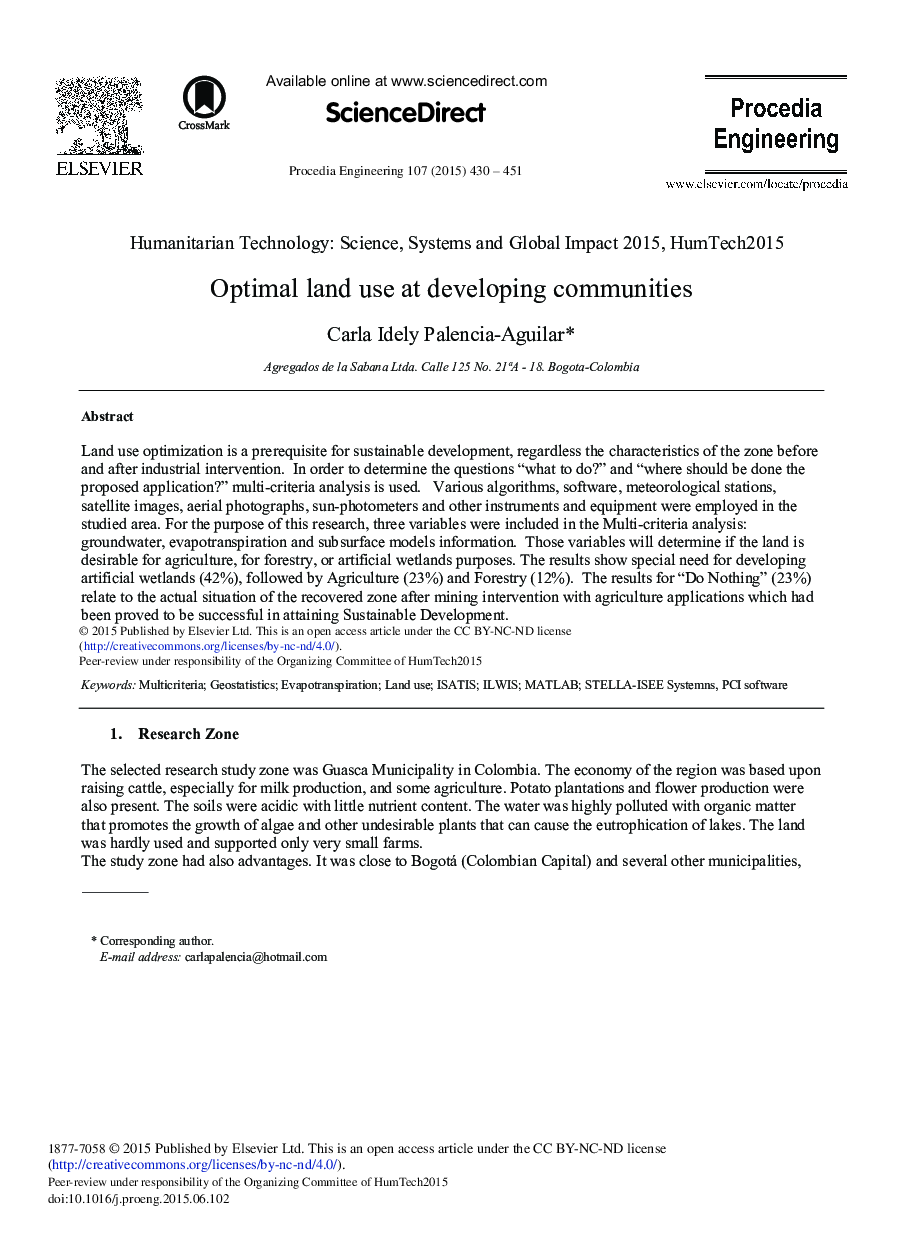| Article ID | Journal | Published Year | Pages | File Type |
|---|---|---|---|---|
| 856749 | Procedia Engineering | 2015 | 22 Pages |
Land use optimization is a prerequisite for sustainable development, regardless the characteristics of the zone before and after industrial intervention. In order to determine the questions “what to do?” and “where should be done the proposed application?” multi-criteria analysis is used. Various algorithms, software, meteorological stations, satellite images, aerial photographs, sun-photometers and other instruments and equipment were employed in the studied area. For the purpose of this research, three variables were included in the Multi-criteria analysis: groundwater, evapotranspiration and subsurface models information. Those variables will determine if the land is desirable for agriculture, for forestry, or artificial wetlands purposes. The results show special need for developing artificial wetlands (42%), followed by Agriculture (23%) and Forestry (12%). The results for “Do Nothing” (23%) relate to the actual situation of the recovered zone after mining intervention with agriculture applications which had been proved to be successful in attaining Sustainable Development.
